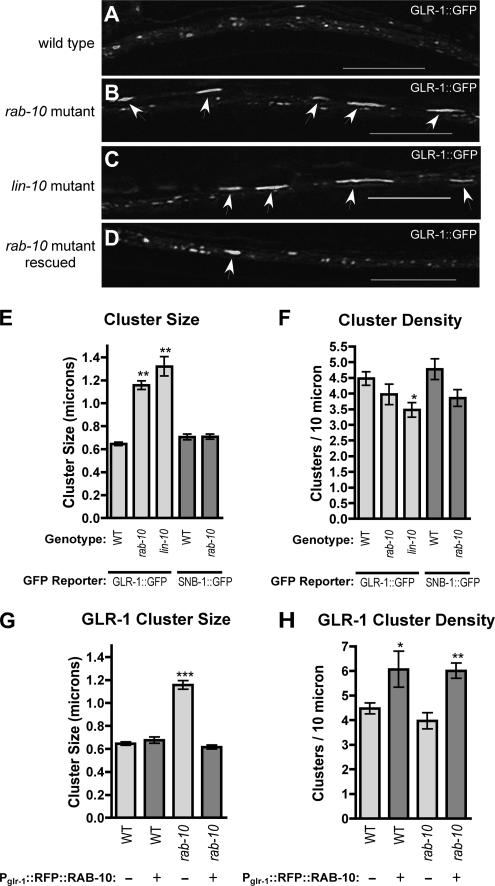Figure 1.
RAB-10 regulates GLR-1 trafficking. GLR-1::GFP fluorescence was observed along ventral cord dendrites of wild-type animals (A), rab-10 mutants (B), lin-10 mutants (C), or rab-10 mutants (D) that express a wild-type rab-10 cDNA (with RFP fused in frame at N terminus) by using the glr-1 promoter. The mean size (E) and the mean density (F; number per 10 μm of ventral cord) of fluorescent puncta are plotted for adult nematodes of the given genotype and for the given fluorescent reporter (either GLR-1::GFP, light gray bars, or SNB-1::GFP, dark gray bars). The mean size (G) and density (H) of GLR-1 clusters are plotted for either wild type or rab-10 mutant adults that either lack (−, light gray bars) or express (+, dark gray bars) a rescuing-RFP::RAB-10 fusion protein from a transgene using the glr-1 promoter. Whereas wild-type animals have small clusters of GLR-1::GFP, rab-10 and lin-10 mutants accumulate GLR-1 in large accretions (arrows). Cell-autonomous expression of RFP::RAB-10 rescues the rab-10 mutant, and it can increase the number of GLR-1 clusters. Bar, 5 μm. Error bars are SEM. N = 15–20 animals for each genotype-transgene combination. *p < 0.05, **p < 0.01, ***p < 0.001 by analysis of variance (ANOVA) followed by Dunnett's multiple comparison to wild type.

